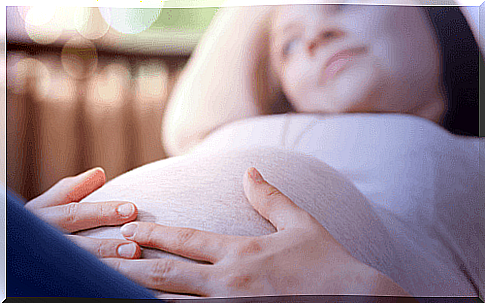6 Types Of Contractions

Our mind associates the word contraction with the birth process. Basically, the idea that you usually have about contractions is very widespread. However, it’s good to know that there are several types of contractions.
Yes. There are different types of contractions and they accompany the mother throughout the pregnancy. They all involve the same muscle: the uterus, which has just enough force to push the baby out of you.
Your labor begins long before labor begins. Given the importance of its role, the uterus needs to exercise during the 9 months of pregnancy.
Know the different types of contractions
The purpose of contractions is to facilitate the circulation of blood through the placenta and uterus, while keeping you in shape. But why does all this happen? Because the uterus, among other functions, helps to leave the baby in the proper channel to exit the mother’s womb.
Thus, we repeat that from the beginning of pregnancy, women experience different types of contractions. They are identified by different names:
1.- Contractions of A:
The first contractions appear in the initial phase through week 28. These contractions are known as A or Álvarez contractions. Its main characteristics are low intensity and low frequency, so much so that they usually go unnoticed by the mother.
2.- Focal contractions:
They usually occur as a reaction to a baby’s movement. They are low-intensity contractions and, as Mario Romero explains in an article, they are due to the stimulation of only one area of the uterus.

3.- Generalized contractions:
They are very similar to the focal ones: however, they differ in that although they start at a specific point, they soon spread to the rest of the uterus.
They can be produced by the baby’s movements or by the mother’s physical efforts. It can also occur due to changes in the pregnant woman’s position or as a sign that the bladder is full.
4.- Braxton Hicks Contractions:
This type of contraction differs from the rest because the belly contracts, but there is no pain. Its duration lasts between 30 and 60 seconds.
In addition, its frequency has an average of 1 hour and increases as the pregnancy progresses. Some mothers felt these contractions from the 13th week of pregnancy.
These contractions usually show up when we reach the second half of pregnancy.
5.- Prepartum contractions:
They have a little more intensity than Braxton Hicks’s. They appear in the last 2 weeks of pregnancy and, as the name implies, announce that labor will start soon.
These contractions perform the function of preparing the cervix for labor. Its frequency is quite regular.
6.- Labor contractions:
These contractions, yes, are the definitive ones and precede the time of delivery. His presence is quite regular, constant and energetic. They manifest in periods of 3 to 5 contractions every 10 minutes. As labor progresses, its duration increases. They last approximately between 60 and 90 seconds.
The pain and intensity these contractions produce also increase as the time for expelling the baby approaches.
Those who have gone through labor say that, despite being intense, these contractions are also satisfactory, as the effort to endure them brings the greatest reward: seeing the child for the first time.

Advice to reduce the number of contractions
We recommend that you try to avoid the following factors in order to minimize the frequency of different types of contractions:
- Negative emotions. Discussions, stressful situations due to work, home or illness of a close family member turn into emotions that are difficult for anyone to deal with, even more so for a pregnant woman.
- Anything that causes excessive worry can trigger more contractions than those caused by physical activity.
- Physical efforts. Avoid running, walking fast, sitting and standing abruptly, or carrying weight for long periods of time.
Remember that all excess is harmful to your health, especially if you are pregnant. Therefore, it is advisable to take care of yourself and be very well informed to recognize the different types of contractions and know how to act when they appear. Of course, never hesitate to see your doctor if you feel any kind of contraction or strange movement in your belly.









